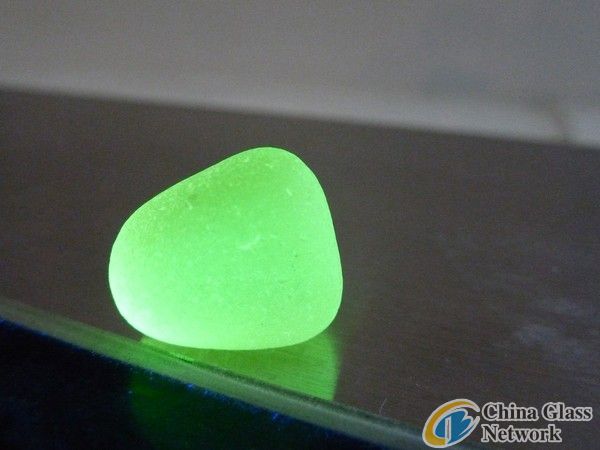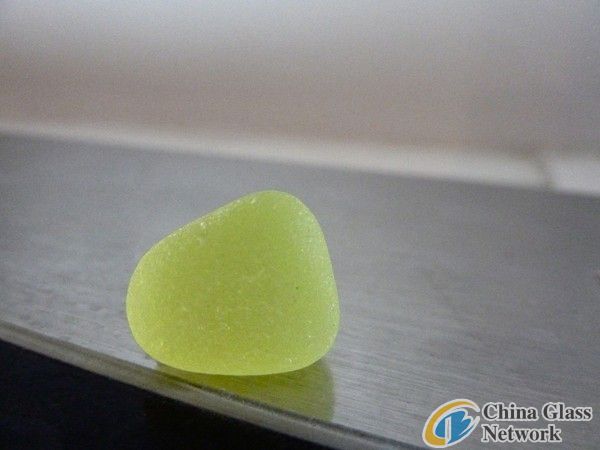Post Time:Jul 28,2011Classify:Glass QuotationView:2840
Think of sea glass, and most will imagine jars of pretty pastel shards in soft blues and greens. But some of my favorite pieces from the collection of sea glass I’ve amassed over years of beachcombing are, at first glance, kind of an ugly color – a sort of sickly, faded yellow-green.

It’s not until you get them under a blacklight that you realize how special these pieces are.
These shards are from Uranium glass, made with trace amounts of the same naturally occurring radioactive metal used to power nuclear plants and create nuclear bombs. The presence of the material in the glass causes it to glow brightly under ultraviolet light.
Glassmakers have been using metal compounds to color glass for millennia, and at some point, some curious craftsman discovered that Uranium gives clear glass an unusual yellow-green tinge, sort of an acid-looking color that looks more intense at the edges and angles of pieces of glass tableware.
People fiddled with adding the element to glass well before Uranium was officially discovered in 1789. But it wasn’t until the 1800s that Uranium glassware became popular, and quite a lot was produced up through the 1920s.
Around the time of the Great Depression, some glass producers started adding other compounds to make the green color more dramatic. This particular kind of “enhanced” Uranium glass is sometimes called Vaseline glass, because it looks a lot like petroleum jelly.
(Incidentally, Vaseline glass falls under a larger style of molded glass tableware popular in that era and generally referred to as Depression glass; sometimes the terms Uranium glass, Vaseline glass and Depression glass are used interchangeably, though they’re not necessarily the same thing).
Back then, people didn’t understand Uranium’s radioactive properties. Today, it’s hard to imagine anyone manufacturing plates and drinking glasses with the stuff, though in general, the amounts of the material used in glassmaking don’t emit a significant amount of radiation. Still, some pieces have enough to trip a sensitive Geiger counter.

So what does all this have to do with sea glass?
The rounded jewel-like glass that collectors love to pick up off the beach comes from somewhere, of course. When a certain kind of item is produced on a large enough scale and then thrown away, we start to see it show up on our beaches.
Or at least, that used to be the case. You can read previous sea glass columns – one about cobalt blue glass, one about seafoam and lavender shards and one about red pieces – for more on where to find sea glass in our area, and on why we’re seeing so much less of it these days.
In sea glass collecting, there are few things as exciting as pocketing a piece and then finding out later that it’s something more than you thought it was. A straw-yellow piece – flat, faintly patterned or even solidly rounded, like the one in these photos, could turn out to fluoresce brilliantly under ultraviolet light. Sometimes you can get the telltale fluorescence with other colors, too, including pink and deep purple.
If you’ve got a significant sea glass collection or you’re interested in checking out pieces you think might be faintly radioactive, I’d suggest buying a small UV flashlight – you can get them for less than ten bucks online. Training the light on a shard will be enough to tell you if it has trace amounts of Uranium in it. You’ll know it when you see it!
Source: http://newmilford-nj.patch.comAuthor: shangyi
PrevGlassPrint early-bird extension expires 31 July
Juye Held YAOHUA Glass Science and Technology Project Ground Breaking CeremonyNext